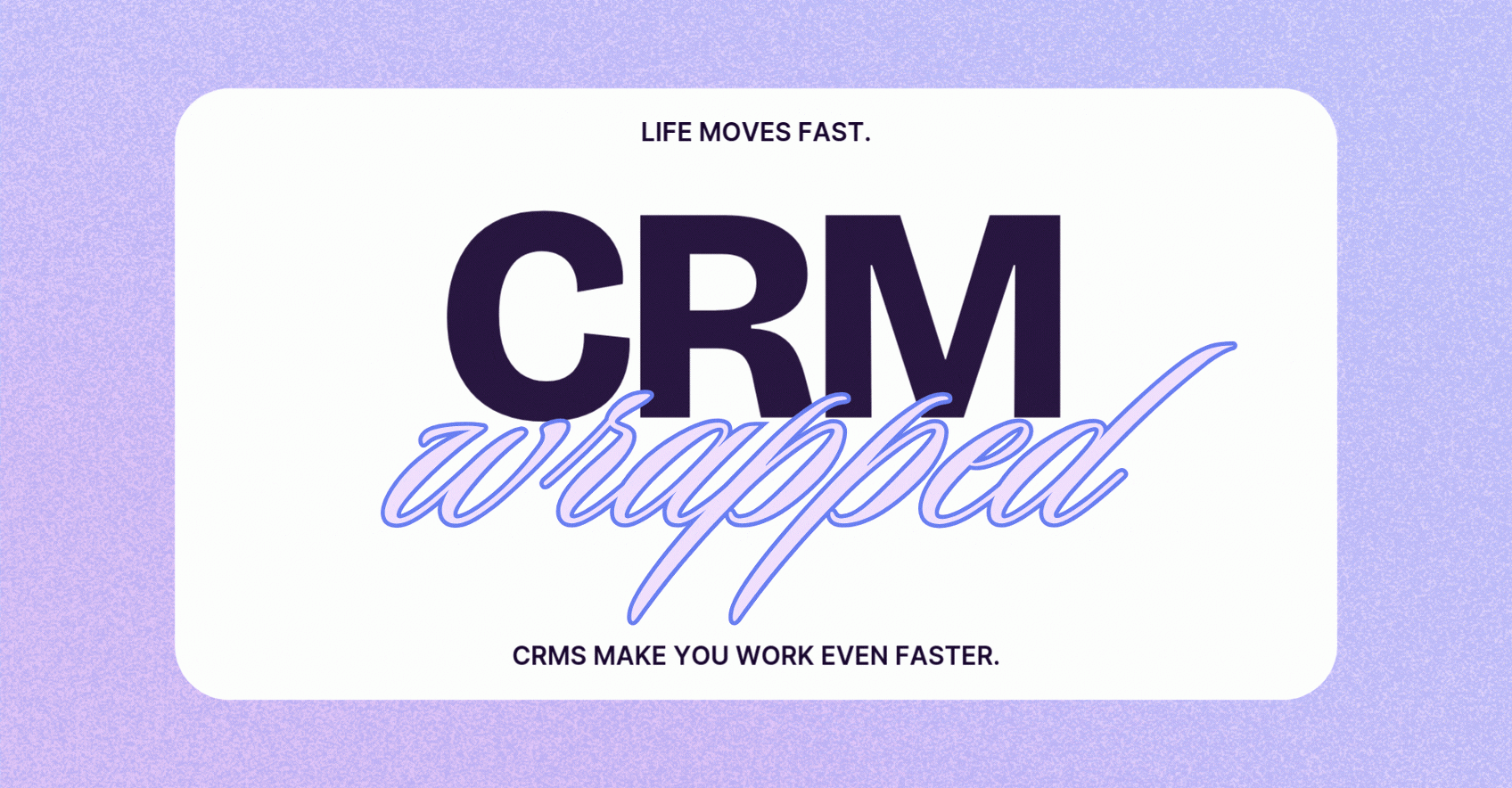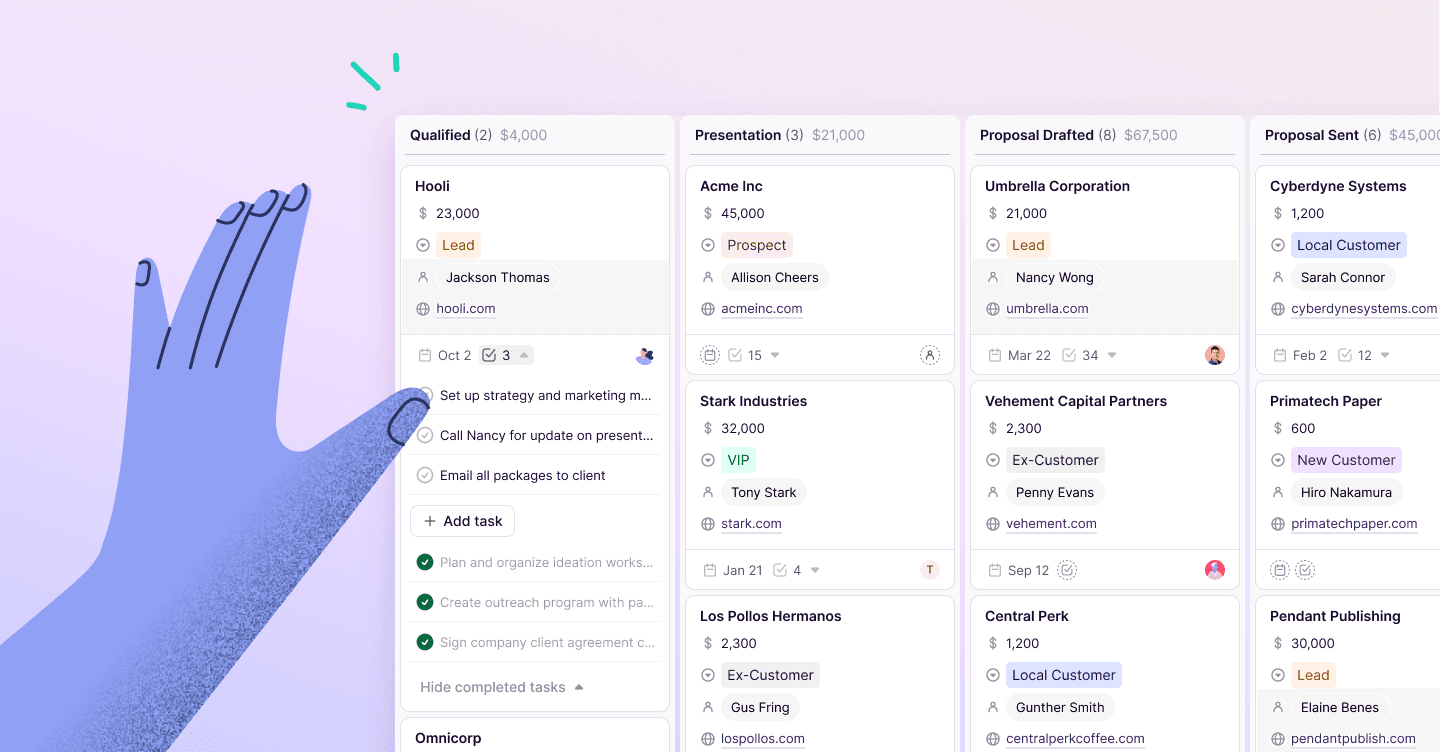Katrina Oko-Odoi
Sr. Content Marketing Manager
Surprisingly, spreadsheets are still the tech of choice for small-to-midsize businesses (SMBs) in a wide range of industries. “Most boutique recruiting firms still use spreadsheets to track everything,” a customer shared with us recently.
In our conversations with countless more SMB owners, we’ve discovered that people can feel quite attached to their spreadsheets. And we get it: It’s hard to abandon a tool once you’ve mastered it, even if it has its limitations.
When you do the research, it turns out that over 1 billion people use spreadsheets in their businesses every month. But SMBs specifically seem to make extensive use of them.
Compared to their enterprise counterparts, SMBs tend to depend on spreadsheets as a principal tool for customer management, lead tracking and CRM reporting.
Considering the plethora of sales and marketing technology in the market, one can’t help but wonder why.
While spreadsheets are a low-tech and low-cost resource, bootstrapped companies routinely ask more of spreadsheets than their fundamental purpose of organizing and categorizing data. This heavy reliance on spreadsheets can have an unexpectedly negative impact on an SMB’s ability to grow and thrive in a competitive market.
It could be time for small biz owners to break up with spreadsheets.
Spreadsheets and SMBs: BFFs?
When businesses are just getting off the ground—whether they’re startups or mom-and-pop brick-and-mortars—SMBs are likely to depend on free or low-cost tools and apps to fit their budget. But choosing a quality tech stack early on in your business journey is more important than you might think.
Companies that start with technology suited to their specific needs and industry tend to survive longer and weather rough patches better than those that try to bootstrap it the entire way. While being thrifty has its merits, digital tool selection may be the one area where this approach isn’t worth it.
The other thing working against SMBs is the fact that our brains are hardwired to resist change. And things become even harder when it involves a whole group of people who are used to a certain system. Once a set of tools becomes ingrained in a company’s operations, it can be like pulling teeth to switch technologies no matter how badly an upgrade is needed.
Here are a few common reasons SMBs cite for not giving up spreadsheets:
- It might be too costly to switch to another application
- It might take too long to learn a new software
- The company doesn’t need any “fancy” features like automation or artificial intelligence
- Spreadsheets are allowing us to do what we need, so why change?
For many SMBs, spreadsheets may appear to have become the Swiss Army knife of productivity. SMBs turn to spreadsheets for everything from general data storage and customer contact management to tracking leads, creating invoices, and generating customer relationship management (CRM) reports.
And with this level of dependency, it’s easy to see why a business leader would be skeptical about another tool’s ability to meet their needs better. But the thing is, some of these tasks are incredibly difficult to manage daily with a mere spreadsheet—even if you’re using a Google spreadsheet template.
In our search for answers, we surveyed more than 100 sales and marketing professionals and made several surprising discoveries. We found that even among SMBs that use a CRM, 70% go off the platform to generate CRM reports, opting to use spreadsheets instead. The majority of business owners (54%) still rely on Excel spreadsheets to track the health of their business in some way.
The CRM for Google Workspace
See why our customers love our native Google integration
Sign up for a 14-day free trial – no credit card required.
4 reasons why SMBs need to break up with spreadsheets
Staying competitive in today’s digital-forward market isn’t easy. Companies recognize the importance of relying on accurate, timely and easy-to-share actionable data. With inaccurate data, a company can make some pretty disastrous mistakes that not only cost time, but millions of dollars in revenue … bringing us to reason number one why SMBs need to break up with spreadsheets:
- 90% of spreadsheets contain errors. A study on risks created by spreadsheet errors found that nearly all spreadsheet modelers lack formal training. So with a majority of professionals creating spreadsheets in an ad hoc manner, duplicated, erroneous and inconsistent data can do real damage to their business’s operations.
- Spreadsheets eat up resources and are unscalable. The attractive low upfront cost of spreadsheets can sometimes blind us to the negative impact they can have on operations, which adds up over time. But as more detail and complexity is added to a spreadsheet, it becomes more unwieldy to use—requiring more staff resources to attend to it. Spreadsheets also lack the ability to scale with a company’s growth due to limited functionality.
- Lack of historical data. There is no historical data storage capability built into spreadsheets, making it difficult or impossible to spot and compare significant data trends over time.
- Cumbersome to use and analyze. Spreadsheets are visually daunting to decipher, which can lead to the vast misinterpretation of data. Not to mention, only people familiar with spreadsheets can navigate them, creating a data silo, which can lead to a lack of visibility across an organization.
Even if your company has been using spreadsheets for a minute, there comes a time as your business grows when they no longer make sense. Here are some signs to look out for.
Signs that your business has outgrown spreadsheets
Keep an eye out for these red flags to know when it’s seriously time to say goodbye to spreadsheets:
- You’re struggling to forecast sales and revenue
- You’re losing or struggling to locate important customer contact details
- You have duplicate customer data stored in different locations
- You can’t execute on marketing plans fast because you can’t pull together data quickly
- You’re basing important business decisions on “gut feelings” instead of relying on analytics
- A low lead-to-customer conversion rate
- Low or falling customer retention
If any of the above is true, it may be time to take a fresh look at CRM tools.
Using a CRM doesn’t have to be painful
Some businesses avoid adopting a CRM tool because they fear it’ll be too complicated or costly to operate. Other small-to-midsize businesses may have a CRM in place but default to their tried and true dependence on spreadsheets because they’ve had a frustrating experience with their current CRM. Whatever reason you have for not fully adopting a CRM, it can’t hold a candle to the lost opportunities from failing to do so.
The secret to a good CRM experience is picking the right one for your business. Like ice cream, CRMs come in a range of flavors, so it’s really important to choose one that ticks all the boxes for your biz. Keep in mind that not all CRMs are created equal, so take the time to find the one that’s right for you.
Copper is the only CRM built from the ground up to integrate natively with Google Workspace, and with our Chrome extension it fits right into your inbox so you don’t have to disrupt your workflow to access your CRM. Sign up for a free 14-day trial today.






